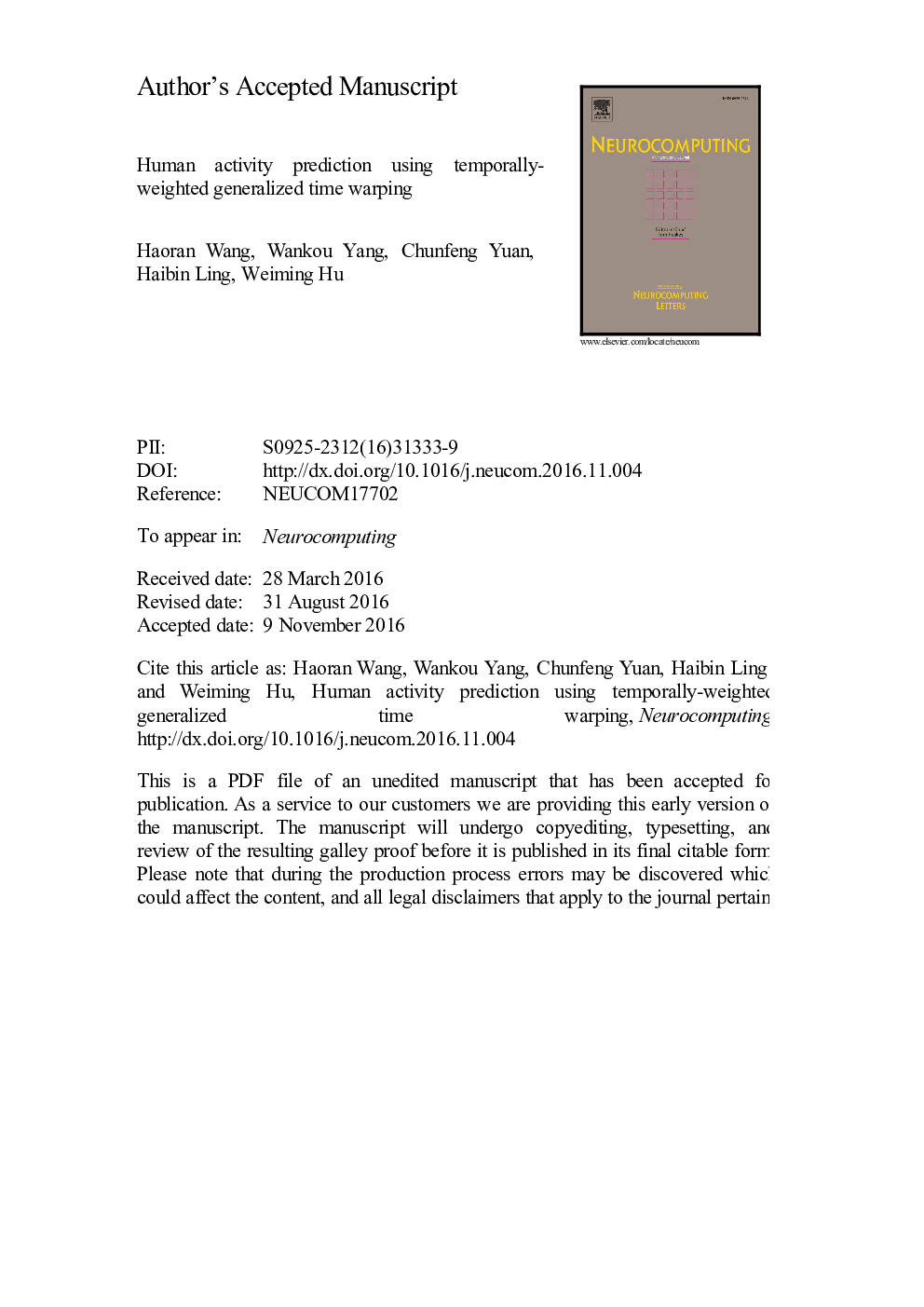| کد مقاله | کد نشریه | سال انتشار | مقاله انگلیسی | نسخه تمام متن |
|---|---|---|---|---|
| 4948071 | 1439602 | 2017 | 11 صفحه PDF | دانلود رایگان |
عنوان انگلیسی مقاله ISI
Human activity prediction using temporally-weighted generalized time warping
ترجمه فارسی عنوان
پیش بینی فعالیت های انسانی با استفاده از زمان بندی کلی به طور کلی وزن
دانلود مقاله + سفارش ترجمه
دانلود مقاله ISI انگلیسی
رایگان برای ایرانیان
کلمات کلیدی
پیش بینی فعالیت، انحراف زمان، هم ترازی،
موضوعات مرتبط
مهندسی و علوم پایه
مهندسی کامپیوتر
هوش مصنوعی
چکیده انگلیسی
Different from traditional human activity recognition, human activity prediction aims to recognize an unfinished activity, typically in absence of explicit temporal progress status. In this paper, we propose a new human activity prediction approach by extending the recently proposed generalized time warping (GTW) [20], which allows an efficient and flexible alignment of two or more multi-dimensional time series. More specifically, for each activity video, either complete or incomplete, we first decompose it into a sequence of short video segments. Then, we represent each segment by the local spatial-temporal statistics using the classical bag-of-visual-words model. In this way, the comparison between a query sequence (i.e., containing an incomplete activity) and a reference sequence (i.e., containing a full activity) boils down to the problem of aligning their corresponding segment sequences. While GTW treats different portions of a sequence as equally important, our task is in favor of early portions since an incomplete activity video always aligns from the beginning of a complete one. Thus motivated, we develop a temporally-weighted GTW (TGTW) algorithm for the activity prediction problem by encouraging alignment in the early portion of an activity sequence. Finally, the similarity derived from TGTW is combined with the k-nearest neighbors algorithm for predicting the activity class of an input sequence. The proposed approach is evaluated on several publicly available datasets in comparison with state-of-the-art approaches. The experimental results and analysis clearly demonstrate the effectiveness of the proposed approach.
ناشر
Database: Elsevier - ScienceDirect (ساینس دایرکت)
Journal: Neurocomputing - Volume 225, 15 February 2017, Pages 139-147
Journal: Neurocomputing - Volume 225, 15 February 2017, Pages 139-147
نویسندگان
Haoran Wang, Wankou Yang, Chunfeng Yuan, Haibin Ling, Weiming Hu,
